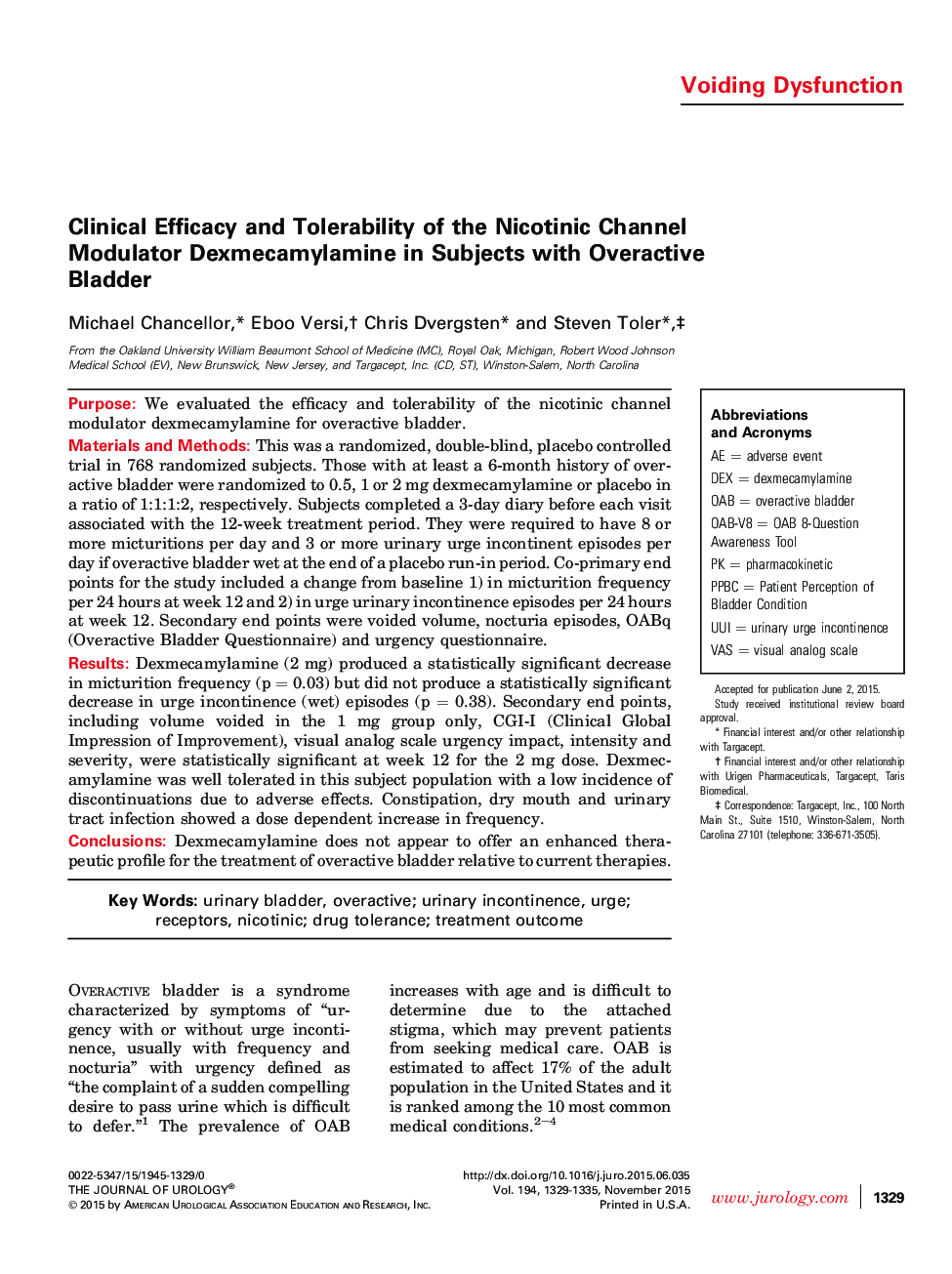| Article ID | Journal | Published Year | Pages | File Type |
|---|---|---|---|---|
| 3860993 | The Journal of Urology | 2015 | 7 Pages |
PurposeWe evaluated the efficacy and tolerability of the nicotinic channel modulator dexmecamylamine for overactive bladder.Materials and MethodsThis was a randomized, double-blind, placebo controlled trial in 768 randomized subjects. Those with at least a 6-month history of overactive bladder were randomized to 0.5, 1 or 2 mg dexmecamylamine or placebo in a ratio of 1:1:1:2, respectively. Subjects completed a 3-day diary before each visit associated with the 12-week treatment period. They were required to have 8 or more micturitions per day and 3 or more urinary urge incontinent episodes per day if overactive bladder wet at the end of a placebo run-in period. Co-primary end points for the study included a change from baseline 1) in micturition frequency per 24 hours at week 12 and 2) in urge urinary incontinence episodes per 24 hours at week 12. Secondary end points were voided volume, nocturia episodes, OABq (Overactive Bladder Questionnaire) and urgency questionnaire.ResultsDexmecamylamine (2 mg) produced a statistically significant decrease in micturition frequency (p = 0.03) but did not produce a statistically significant decrease in urge incontinence (wet) episodes (p = 0.38). Secondary end points, including volume voided in the 1 mg group only, CGI-I (Clinical Global Impression of Improvement), visual analog scale urgency impact, intensity and severity, were statistically significant at week 12 for the 2 mg dose. Dexmecamylamine was well tolerated in this subject population with a low incidence of discontinuations due to adverse effects. Constipation, dry mouth and urinary tract infection showed a dose dependent increase in frequency.ConclusionsDexmecamylamine does not appear to offer an enhanced therapeutic profile for the treatment of overactive bladder relative to current therapies.
